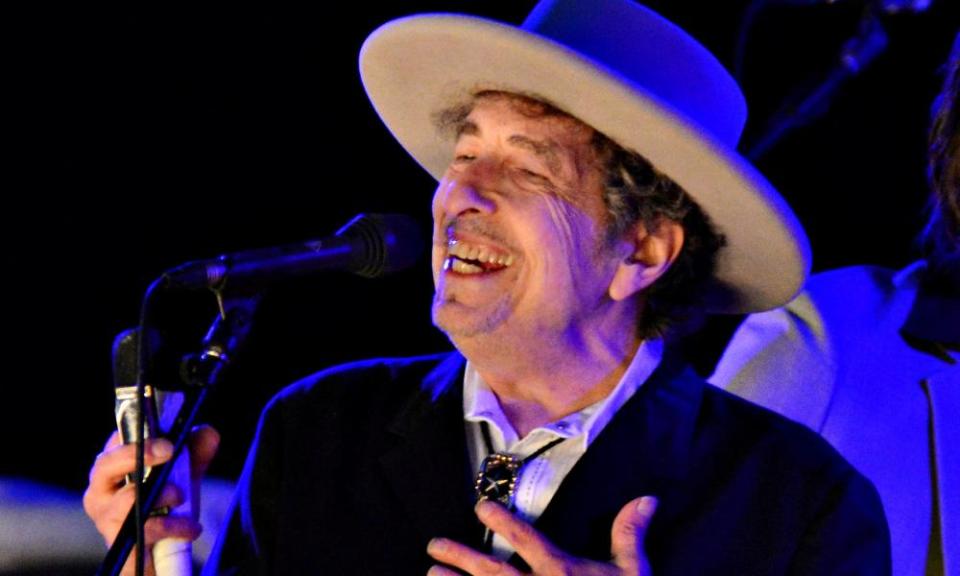No room for nostalgia as Bob Dylan keeps show on the road

Bob Dylan is well into his sixth decade of confounding every expectation of him. The 1960s’ lightning rod, the voice-of-a-generation folk singer who then redefined rock’n’roll with his “thin, wild mercury sound”, achieved this status only by doing as he, and nobody, else saw fit.
He has continued in that vein. He is 75 now, and controversy still has a way of finding him.
Last year he became the first songwriter to be garlanded by the Nobel committee. Angry debate raged over the suitability and merit of the award. Dylan, wisely, said nothing, for or against, until the dust had settled.
He tours constantly, and while these days there are no hecklers to berate him with cries of “Judas!”, anyone who attends a Dylan show hoping for an excursion into the past will be disappointed. His songs bear only the scantest resemblance in performance to the celebrated recordings.
Dylan last released an album of original material, Tempest, five years ago. He is evidently and justly proud of it, as it provides almost a quarter of the material in this show. Since then he has issued three albums of American popular standards, six of which tunes feature tonight.
For perhaps the most parodied vocalist in pop history (“Hey, Mr Tambourine Man, say a song for me,” runs the old joke), taking up Frank Sinatra’s mantle is a seemingly counter-intuitive move. And like so many such moves by him, an effective one.
Dylan is also the most covered solo songwriter. He has turned the tables and obliged people to hear him as an interpreter – a unique and fascinating one.
Yet even this shouldn’t be a revelation. That’s exactly what he’s been doing with his own songbook for years: treating it as if someone else wrote it. Tonight is no exception.
As usual, he is no respecter of his catalogue. Or rather, no respecter of nostalgia for it. The sound he makes with his five-man backing group flits across locations and eras – Nashville, New Orleans, Texas; the 40s to the 80s.
But it always, with the exception of the very French Autumn Leaves, runs close either to American roots music or pre-rock’n’roll pop. It is rough around the edges, but only there: at its core, it is artful and polished enough to suit this theatre venue just so.
Curiously, and typically, Dylan plays nothing whatsoever from the years between what is generally considered the last masterpiece of his initial creative flush, Blood on the Tracks (1975), and the career-reviving Time Out of Mind (1997). That’s 13 albums and, despite haywire quality control, a host of great songs for which he seems to have no time at all.
In his now-customary white gaucho hat and striped trousers, Dylan divides his time between the piano and centre-stage, where he croons at a tilted microphone stand.
At the former, his functional rock’n’roll playing style dominates the atmosphere of the music, an odd admixture of the brisk with the melancholic, and harks back to his first professional gig as a pianist for teen idol Bobby Vee.
Many of the versions feel like wry half-jokes. He opens with a rolling take on the mordant Things Have Changed, lately almost his theme tune.
Nearly two hours later, he will close with a thumping Ballad of a Thin Man all the more coruscating for his offhand phrasing (“Something is happening here, but you don’t know what it is”).
In between, he delivers a Desolation Row as breezy as the original is dark and bleak; and Don’t Think Twice, It’s All Right in a spry boogie-woogie arrangement.
When Dylan said in 1965 that he thought of himself as “a song and dance man”, this was taken as a sardonic quip. As time passes, it has come to be ever more plausible that he meant it, that he thinks this a perfectly good thing to be, and that he has a point.

 Yahoo News
Yahoo News 